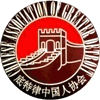A booming Chinatown flourished along the south side of Pennsylvania Avenue in Washington, DC. Chinese laundries, restaurants and drugstores popped up. And traditional tongs, confraternities that protect their members from racial discrimination, became active in the community.
In the past, many immigrants came from Hong Kong, Taiwan and the People’s Republic of China. Today, the majority of newcomers are families from the latter country.
The History of Chinatowns
The Chinatowns of America tell a multilayered story of welcome, rejection, and acceptance. They remain today a unique place where people connect to family, community, and a history that has formed the American experience.
After the Civil War and the passage of the Chinese Exclusion Act, new immigration to America slowed. But many older immigrants, mostly men, continued to live in Chinatowns where they operated restaurants and small businesses. The communities formed strong organizations of mutual support including social societies and family and district associations.
These groups helped ward off attacks by angry mobs and the spread of false information about the community, such as accusations that it was a center of prostitution and criminal activity. They also developed strategies for preserving their historic buildings, which were often cramped tenement apartments with kitchens in hallways or utility rooms. The tenements were often built from the 1820s through the early 1920s as a result of a frenzy of bank lending and real estate investment.
Community Organizations
In addition to serving as an information center for Chinese community members CCBA also works with City government agencies to resolve ongoing problems in Chinatown such as unsafe streets, insufficient parking and confusing sanitation enforcement regulations. It also organizes and promotes social and cultural events.
Historically Chinese immigrants formed social organizations based on their area of origin, district or village as well as family associations based on their surname. These organization helped the migrants acclimate to the new environment and survive in a new and strange land.
In the early 1900s new political, clan and county organizations started to compete with CCBA for power and loyalty of the community. This weakened the CCBA’s position as leader and eventually created factions in the community. WCCA is dedicated to serving the Chinese community and working collaboratively with other communities to build a stronger and more inclusive society. Their motto “Together, Better” encapsulates their vision for unity and collaboration.
Political Organizations
China’s vast network of united front groups has been linked to political interference and economic espionage. Universities with ties to the UFWD have been accused of suppressing academic freedom and mobilising students for nationalistic activities. Many of these organisations have overseas branches. Citizens face reprisals—from censored writings to travel restrictions and demotion to prison—for expressing views critical of the CCP’s governance or Xi Jinping. Administrators of social media platforms monitor conversations to ensure compliance with government content restrictions.
Despite officially being a democracy, elections rarely provide any meaningful opportunity for Chinese citizens to participate in politics. Minorities, women, and LGBT+ people are underrepresented in top positions of the state. Government propaganda seeks to negatively associate Western culture with AIDS and homosexuality, exacerbating discrimination against these communities. The legal system is also compromised by arbitrary regulatory obstacles, debilitating censorship, and demand for bribes.
Cultural Organizations
The Chinese Consolidated Benevolent Association is one of the most prominent community organizations in Chinatown. It performed a quasi-governmental role in the early history of New York’s Chinatown and helped many residents achieve their goals of business ownership by supporting them financially and providing training. Today, CCBA has local agencies in 26 cities with significant Chinese communities.
The organization celebrates and enriches a diverse regional community by sharing the splendor of Chinese cultural heritage through universal language of dance. Its programs and activities provide educational opportunities for children and adults, foster a stronger sense of belonging among the Asian community and beyond, and promote cross-cultural understanding.
The organization is dedicated to preserving the Chinese culture and traditions in West Michigan. It also promotes the development of business partnerships between Chinese and non-Chinese businesses, and provides community outreach services. It has a strong focus on civic responsibility and helps youth participate in volunteer community service projects.
